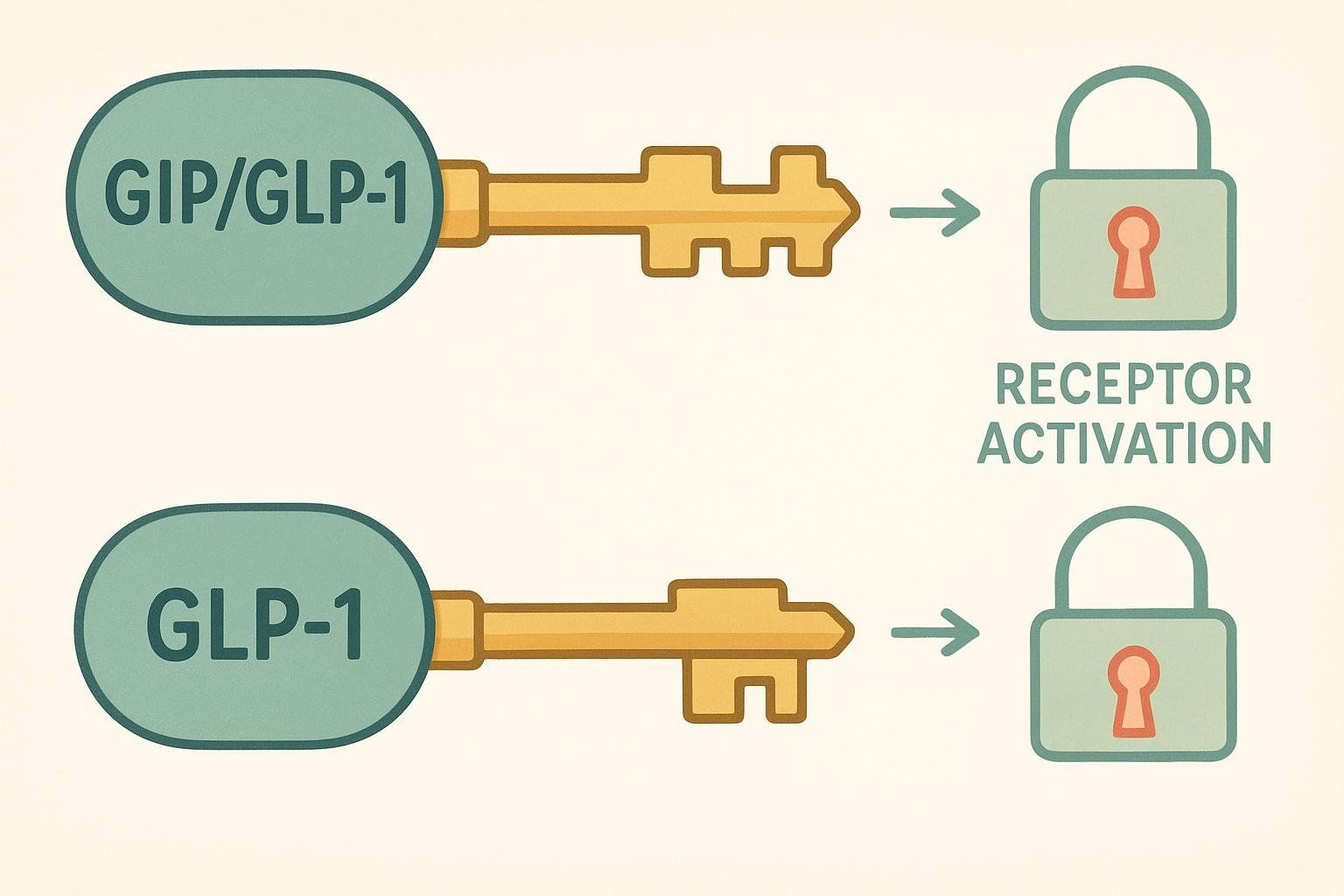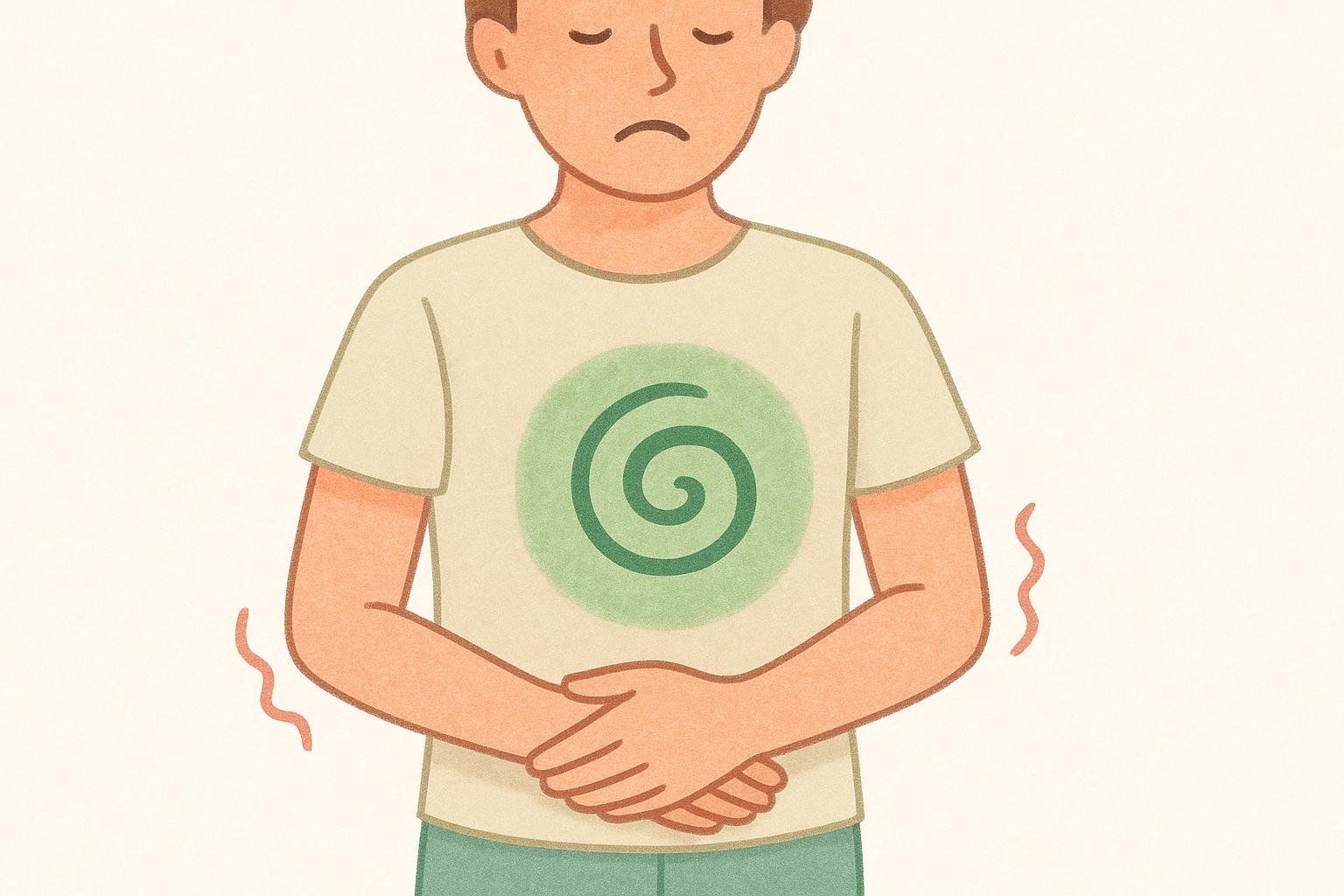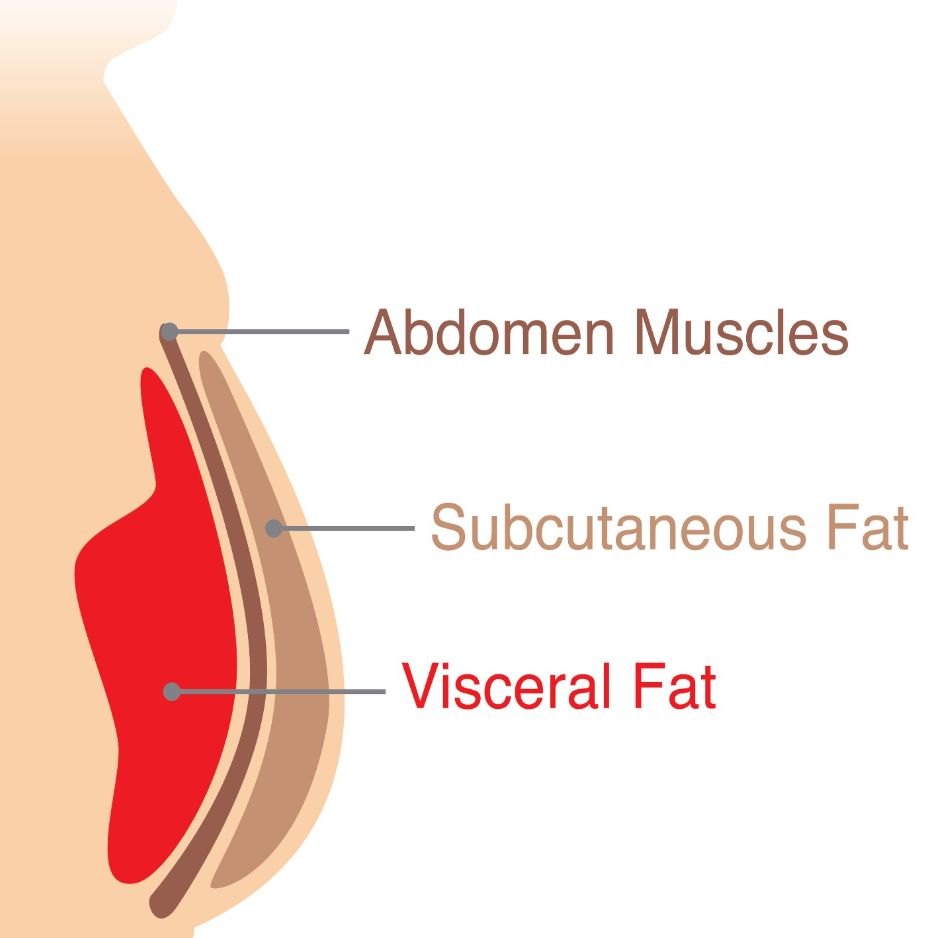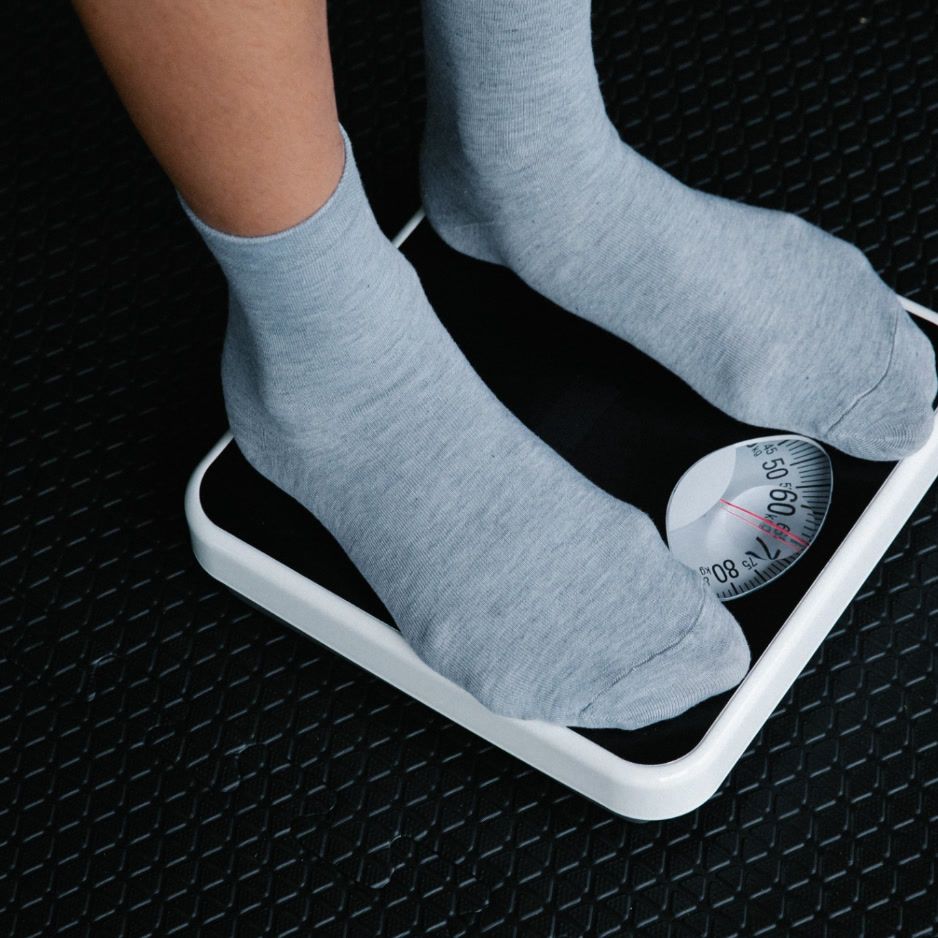Mounjaro vs. Ozempic: 2025 Comparison and Guide

Mounjaro vs. Ozempic: 2025 Comparison & Guide
Note: This guide is informational and not a substitute for medical advice. Talk with your healthcare professional about your specific situation.
If you are evaluating Mounjaro (tirzepatide) and Ozempic (semaglutide) for type 2 diabetes or weight loss, this guide breaks down the key differences. It highlights where these weekly injections are similar, where they differ, and the key factors to consider in a treatment decision.
At‑a‑Glance Comparison
| Category | Mounjaro (tirzepatide) | Ozempic (semaglutide) |
|---|---|---|
| Drug class & mechanism | Dual GIP/GLP‑1 receptor agonist | GLP‑1 receptor agonist |
| FDA approval (primary) | Type 2 diabetes | Type 2 diabetes |
| Additional FDA‑approved benefits | None for cardiovascular or kidney risk reduction (as of 2025) (Mounjaro FDA label) | Reduces CV & kidney risk in specific T2D populations (Ozempic FDA label, 2025) |
| Weight‑loss brands (same actives) | Zepbound (tirzepatide) | Wegovy (semaglutide) |
| Typical A1C reduction (head‑to‑head) | Greater reductions than semaglutide 1 mg in SURPASS‑2 over 40 weeks (SURPASS‑2 trial) | Lower than tirzepatide in SURPASS‑2 (1 mg dose comparator) (SURPASS‑2 trial) |
| Weight loss (real‑world cohorts) | Larger mean % loss than semaglutide at 3–12 months with similar GI AEs (Real‑world cohort study) | Smaller mean % loss vs tirzepatide in the same cohort (Real‑world cohort study) |
| Dosing & titration | Start 2.5 mg weekly; increase by 2.5 mg no sooner than every 4 weeks; max 15 mg (Mounjaro FDA label) | Start 0.25 mg weekly x4 weeks; then 0.5 mg; may increase to 1 mg and 2 mg if needed (Ozempic FDA label, 2025) |
| Pen format | Single‑use pens | Multi‑dose pens (replace needle each use) (GoodRx) |
| Common side effects | Nausea, diarrhea, decreased appetite, vomiting, constipation (Mounjaro FDA label) | Nausea, diarrhea, vomiting, constipation, abdominal pain (Ozempic FDA label) |
| Serious warnings (both) | • Boxed warning (thyroid C‑cell tumors in rodents) • Pancreatitis; gallbladder disease • Severe GI adverse reactions • Hypoglycemia with insulin/secretagogues • Possible acute kidney injury | • Boxed warning (thyroid C‑cell tumors in rodents) • Pancreatitis; gallbladder disease • Severe GI adverse reactions • Hypoglycemia with insulin/secretagogues • Possible acute kidney injury |
| Typical cash price (varies) | ≈ $1,000+ per month; savings cards may reduce costs (Drugs.com; GoodRx) | ≈ $1,000+ per month; savings cards may reduce costs (Drugs.com; GoodRx) |

What They Are — and Why They Work
Both medications are once‑weekly injections that mimic gut hormones called “incretins,” which boost insulin when glucose is high, reduce glucagon, slow stomach emptying, and curb appetite.
- Mounjaro activates two receptors (GIP and GLP‑1), which likely explains its stronger average effects on A1C and weight in trials and cohorts (SURPASS‑2 trial; Real‑world cohort study).
- Ozempic activates GLP‑1 only but carries outcomes‑level approvals for heart and kidney risk reduction in qualifying people with T2D (Ozempic FDA label, 2025).
As a WebMD guide clarifies, the FDA‑approved brands specifically for chronic weight management are Wegovy (semaglutide) and Zepbound (tirzepatide).
How Do Results Compare?
Efficacy in Type 2 Diabetes
- Head‑to‑Head RCT (SURPASS‑2): Over 40 weeks, tirzepatide 5–15 mg beat semaglutide 1 mg on A1C (about −2.0% to −2.3% vs −1.9%) and weight loss (about −7.6 to −11.2 kg vs −5.7 kg) (SURPASS‑2 trial). Note: semaglutide 2 mg was not part of this comparison (GoodRx).
Real‑World Weight Loss
- Large EHR cohort (n≈18,000 matched): Tirzepatide produced greater mean percentage weight loss than semaglutide at 3, 6, and 12 months, with similar GI adverse‑event rates (Real‑world cohort study). Explainers from Scripps Health echo these findings.

Cardiovascular & Kidney Outcomes
- Ozempic: FDA‑approved to reduce risk of major adverse cardiovascular events in adults with T2D and established CVD, and to reduce risk of kidney disease progression and CV death in adults with T2D and CKD (Ozempic FDA label, 2025).
- Mounjaro: As of 2025, no outcomes‑level CV or CKD indications on the U.S. label (Mounjaro FDA label).
Dosing & Titration

Mounjaro (tirzepatide)
- Start: 2.5 mg once weekly for 4 weeks.
- Increase by 2.5 mg no sooner than every 4 weeks (5 → 7.5 → 10 → 12.5 → 15 mg), as tolerated.
- Max: 15 mg weekly. (Mounjaro FDA label)
Ozempic (semaglutide)
- Start: 0.25 mg weekly for 4 weeks → 0.5 mg for ≥4 weeks.
- May increase to 1 mg, then 2 mg if more control is needed.
- Titrate based on efficacy/tolerability. (Ozempic FDA label, 2025)
According to Health.com, many side effects cluster around dose increases and often settle as your body adapts (Health.com).
Side Effects & Safety
Common GI Effects (both): Nausea, vomiting, diarrhea, constipation, indigestion. Rates are broadly similar between drugs, and highest during titration (SURPASS‑2 trial; Mounjaro FDA label; Ozempic FDA label).

- Mounjaro: nausea ~12–18%, diarrhea ~12–17%, vomiting ~5–9%, constipation ~6–7% overall; most GI events occur during dose escalation and ease over time (Mounjaro FDA label).
- Ozempic: nausea ~16–20%, diarrhea ~8–9%, vomiting ~5–9%, constipation ~3–5% (Ozempic FDA label).
Serious Warnings (both):
- Boxed warning for potential risk of thyroid C‑cell tumors (seen in rodents); avoid if you or family have MTC or MEN 2.
- Acute pancreatitis, acute gallbladder disease, severe GI adverse reactions.
- Risk of hypoglycemia with insulin or sulfonylureas.
- Possible acute kidney injury with dehydration.
- Delayed gastric emptying may increase aspiration risk during anesthesia and deep sedation (Ozempic FDA label, 2025).
Special Considerations
- Mounjaro can reduce the efficacy of oral contraceptives during initiation and dose escalation; consider non‑oral or barrier contraception for 4 weeks after starting and after each dose increase (Mounjaro FDA label).
- Ozempic has explicit warnings on diabetic retinopathy complications in those with a history; monitor if at risk (Ozempic FDA label, 2025).
For practical symptom tips (nausea, reflux, constipation), see: Mounjaro side effects. The same strategies (small, low‑fat meals; ginger or peppermint; hydration; slower titration when appropriate) often help with Ozempic as well.
Cost & Coverage

- List prices hover around $1,000+ per month for both medications; manufacturer programs may reduce costs for eligible people with commercial insurance (Drugs.com; GoodRx).
- Insurance often covers Ozempic and Mounjaro for type 2 diabetes. For weight loss, coverage generally requires the weight‑loss‑specific brands (Wegovy or Zepbound) and prior authorization, as explained by WebMD.
Which One Should You Choose?
A quick decision framework to discuss with your clinician:

- If your priority is the largest average A1C and weight changes, note that Mounjaro outperformed semaglutide 1 mg in SURPASS‑2 and in a large real‑world cohort (SURPASS‑2 trial; Real‑world cohort study).
- A key consideration is whether you need on‑label cardiovascular and kidney risk‑reduction indications; Ozempic carries these in specific T2D populations (Ozempic FDA label, 2025).
- If you’re sensitive to GI effects, ask about slower titration, meal timing, and side‑effect strategies.
- Coverage & access often determine the practical choice; formularies and supply vary.
Tracking Body Composition, Not Just Weight
GLP‑1/GIP therapies work partly by curbing appetite — which means protecting lean mass takes intention. Pairing medication with protein‑forward nutrition and strength training can help, and objective measurements add clarity:
- Using a BodySpec DEXA scan can help measure fat vs. lean mass and visceral fat changes over time. Starting with a baseline allows you to track progress, and re‑scanning every 8–12 weeks helps confirm that most weight lost is fat. Learn more: DEXA Body Scan: Complete Guide and How to interpret DEXA results.
- For muscle preservation strategies on GLP‑1s, see our guide: Ozempic muscle loss — prevention guide.
When you’re ready, you can book a BodySpec DEXA scan to get your baseline and track your transformation with objective, medical‑grade data.


